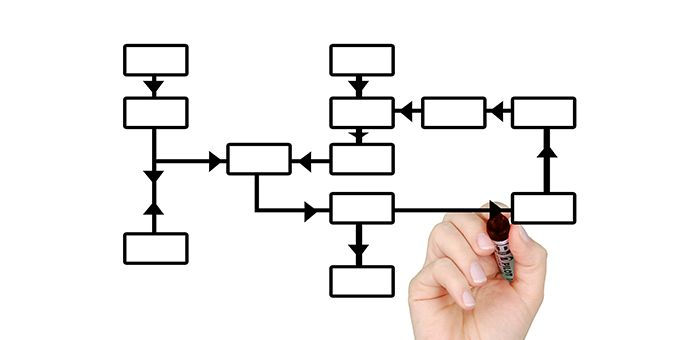Workplace distancing simulation and management: Facilities, manufacturing, offices
- Support Department
- Jun 23, 2020
- 4 min read
To lower risk to COVID-19 exposure, use digital twin design and simulation software, wireless tags and receivers and asset tracking software help manage employee risks and enable workplace productivity. See nine questions manufacturers and facility owners need to ask about COVID-19.

Integrating wireless, software, and hardware technologies can help with workplace distancing, offering the “next normal” of productivity in the COVID-19 pandemic, as explained remotely on June 4, from Siemens Digital Industries (DI), Plano, Tex., and other Siemens locations.
While the presentation aimed at manufacturers, the same technologies can be applied to distribution centers, warehouses, and commercial and government facilities to lower COVID-19 risks related to employee safety, technology investments, restarting or expanding production, and additional operating costs. (See nine COVID-19 questions to ask, below.)
Workplace distancing modeling, simulation, workspace validation
For manufacturers restarting, maintaining, or expanding operations during the ongoing COVID-19 pandemic, employee safety includes establishing production environments and workflows that address physical distancing requirements. Combining wireless hardware and tracking and simulation software, companies can:
Quickly and efficiently model how employees interact with each other, the production line and plant design
Build an end-to-end digital twin to simulate worker safety during the COVID-19 pandemic
Iterate on and optimize workspace layouts
Validate safety and efficiency measures to help future-proof production lines.
During and after the COVID-19 pandemic, the hardware and software can be applied to other uses to enhance more efficient workflows.
Bluetooth tags helps distance workers
Using Bluetooth-enabled wireless tags, companies can continuously measure distances among workers, provide real time visual feedback to employees regarding spacing from others and create a log of all movements and interactions over time to facilitates safe distancing during the COVID-19 pandemic.
Combining the wireless tags with digital twin simulation software of the actual manufacturing environment permits companies to model and simulate how employees interact with the equipment and each other, enabling them to iterate and optimize safety and productivity in the short term, and validate a redesign of the operation before more costly physical changes are made to lower COVID-19 pandemic risk.
“We are helping our customers create a safe work environment, which is extremely important as they look to produce efficiently and reliably under unprecedented circumstances,” said Tony Hemmelgarn, president and CEO of Siemens Digital Industries Software, commenting on workplace adjustments during the COVID-19 pandemic. “The combination of real time distancing management and digital simulations will help companies maintain safe work environments today and make educated decisions about ongoing and long-term optimization.”

Siemens’ Simatic Real Time Locating Systems (RTLS) transponders are embedded in badges as COVID-19 personal protective equipment by all employees so transponders can track and record workforce movement in the Next Normal Manufacturing workplace distancing solution. Badges will display a warning, alerting them to risk. Data can be analyzed to identify “hot spots” where risk scenarios occur frequently. Courtesy: Siemens Digital Industries
Wireless badges as PPE to alarm safe distances
The real-time locating system transponders are embedded in badges worn as COVID-19 personal protective equipment (PPE) by all employees. RTLS receivers placed throughout the operation can then continuously track and record workforce movement. When two employees are in a risk scenario (such as less than six feet apart), their badges will display a warning, alerting them to the situation. The data collected over time can be analyzed to identify “hot spots” where COVID-19 risk scenarios occur frequently. Such situations become actionable via the digital twin, which is provided by process simulation software and plant simulation software. Using the collected data, new manufacturing layouts or workflows can be simulated to provide the desired outcomes, which can then be implemented in the physical operation.
COVID-19 track and track in the workplace
Manufacturers can add traceability with on-premise or cloud-based software to help enable rapid, contact analysis in case of COVID-19 illness. All movement and contact with the affected employee can be visualized, enabling rapid notification of those who came into close contact and selective (rather than site-wide) deep cleaning of exposed physical environments.
“Siemens is providing a powerful, rapidly deployable solution that helps manufacturers take control of their operations and achieve better safety, productivity and cost outcomes today and in the post-COVID era,” said Raj Batra, president of Digital Industries for Siemens USA. An implementation “can begin delivering results for most manufacturers in one to two weeks.”

Digital twin, provided by Siemens’ Tecnomatix Process Simulate and Plant Simulation software uses collected data from employees so new manufacturing layouts or workflows can be simulated to provide the desired outcomes to be implemented in the physical operation. The on-premise or cloud-based Siemens’ Trusted Traceability Application on MindSphere, a cloud-based, IoT operating system, helps enable rapid, comprehensive contact analysis if COVID-19 is reported, visualizing areas and employees affected for rapid notification and targeted cleaning. Courtesy: Siemens Digital Industries
Nine questions manufacturers and facility owners need to ask about COVID-19
In the presentation, Siemens offered nine questions facility owners and manufacturers should ask about COVID-19 employee safety, technology investments, restarting or expanding production, and additional operating costs.
How do we improve employee, union and executive confidence to accelerate plant startup?
How do we ensure employees are following new guidelines?
How can we monitor employee interactions while respecting their privacy?
How can we address COVID-19 recovery AND protect their investment for future use?
How can we utilize this new data with digital tools for future safety/production improvements?
How can we ensure production line changes are optimal and employees are trained?
How can we modify shift change procedures to optimize production?
How can we keep cleaning and disinfecting costs down?
How can we avoid additional shutdowns and lost production?




Comments